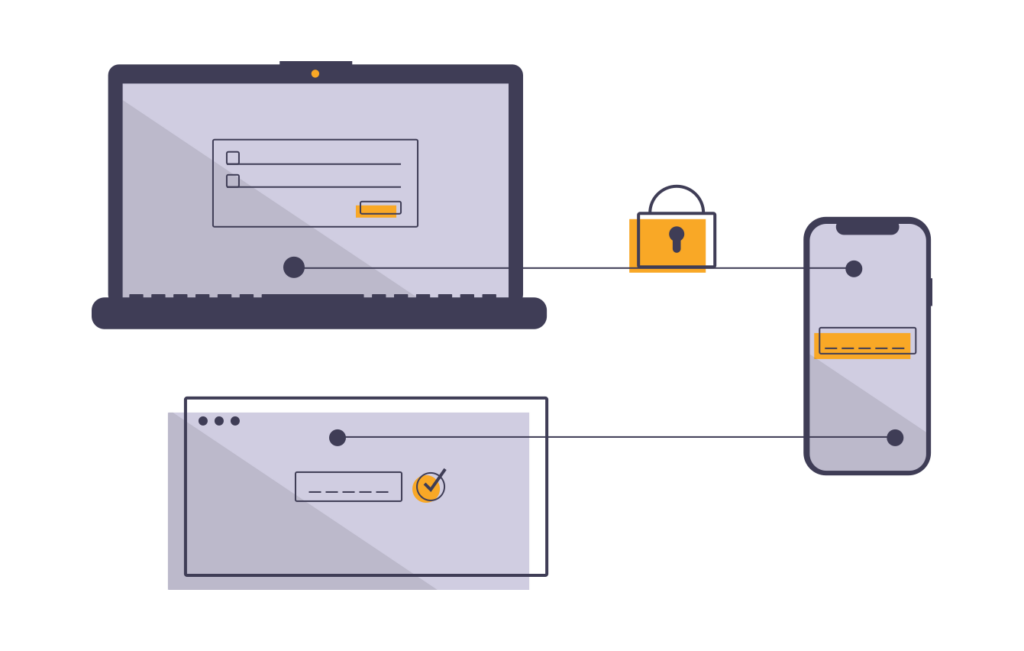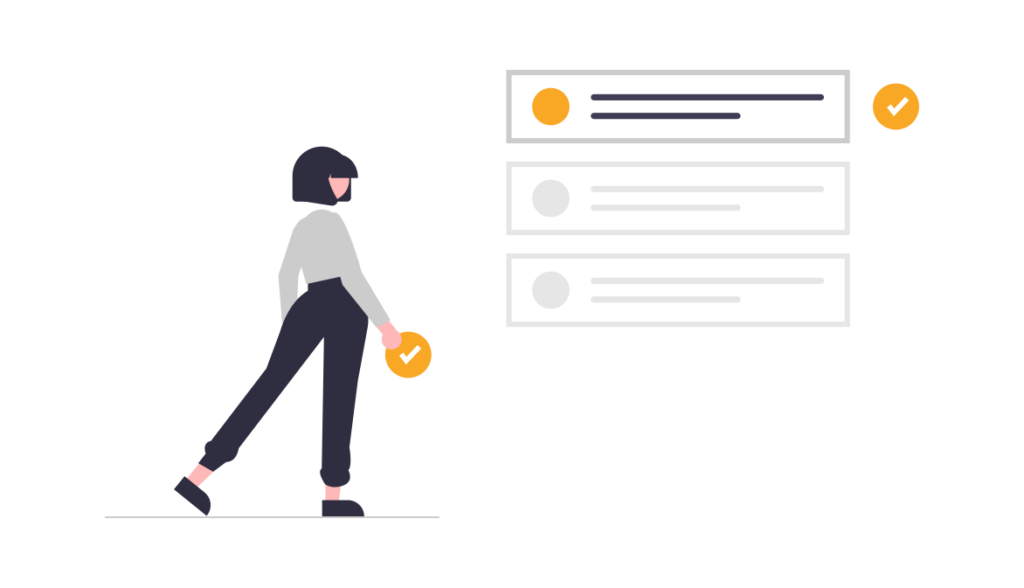IT Security Audits
IT security checks are crucial for the security of your IT systems and data. In this article, we discuss everything about IT security audits, their benefits, types of audits, audit processes and provide a helpful checklist for conducting an IT security audit for your company.

What are IT security audits, and why are they important?
IT security audits involve the systematic examination and evaluation of an organization’s IT infrastructures, systems, and processes to ensure that adequate security measures are implemented by the operator and information security is guaranteed.
These audits are conducted either internally by your employees or externally by independent auditors. The purpose is to identify vulnerabilities in your IT, assess risks, and ensure that IT systems comply with relevant security standards and policies.
Overall, IT security audits are an essential component of a comprehensive security management system.
The benefits of IT security audits
IT security audits offer a variety of benefits for your organization. Here are some of the most important ones:
Identification of weaknesses: IT security audits allow for the systematic identification of weaknesses in an IT infrastructure, such as technical vulnerabilities as well as inadequate policies and processes that may increase the risk of security breaches.
Risk assessment: Assessing risks allows for targeted measures to be taken to minimize potential threats and to enable a focus on critical areas.
Ensuring compliance: IT security audits help ensure that your company’s IT complies with these relevant legal requirements, thus ensuring compliance.
Building stakeholder trust: The certainty that your company has appropriate security controls strengthens the trust of your customers, partners, and other stakeholders. This is particularly important when your business involves the handling of sensitive data.
Improving efficiency: By identifying inefficient security processes and recommending improvements, IT security audits can help increase the efficiency of your security measures.
Early detection of threats: Regular audits enable the early detection of threats and vulnerabilities before they lead to serious security breaches.
Optimization of security policies: IT security audits aid you in reviewing and optimizing your IT security policies. By adapting policies to current threats and best practices, companies can strengthen their security postures.
Emergency preparedness: The results of IT security audits serve as the foundation for the development and updating of emergency plans. This allows your team to respond more quickly to security incidents and minimizes potential damage.
Cost savings: By identifying inefficient security measures and implementing more cost-effective solutions, IT security audits can lead to long-term cost savings.
Continuous improvement: IT security audits promote a culture of continuous improvement in the field of information security. Companies can thus respond to changes in the threat landscape and adjust their security strategies accordingly.

What types of IT security audits are there?
Various types of IT security audits can be conducted individually or in combination, depending on the specific requirements and goals of a company. Here are brief descriptions of some common types:
Network security audit
This audit examines the security configuration of network components such as firewalls, routers, and switches to identify potential vulnerabilities in your network infrastructure.
Wireless security audit
Related to network security, a wireless security audit assesses the security of wireless networks and devices to identify vulnerabilities in WLAN security.
Application security audit
Focusing on the security of applications, including web and mobile applications, this audit identifies vulnerabilities in application logic, authentication, and database access. Differences between standard and custom applications need to be considered during the analysis.
System and server security audit
This audit assesses the security and configuration of servers, operating systems, and other systems, identifying vulnerabilities in the system architecture and configuration.
Physical security audit
Behind how many locked doors are your servers located? Evaluating the physical security of data centers, server rooms, and other critical locations, this audit assesses potential access ways to hardware and security controls.
Social engineering audit
Simulating attacks that attempt to persuade employees to disclose confidential information, this audit assesses the effectiveness of security awareness training programs for your staff.
Compliance audit
This audit verifies whether your IT systems and practices comply with legal regulations and industry-specific standards, with a focus on data protection.
Cloud security audit
Assessing the security configuration and practices in your utilized cloud environments, this audit often includes evaluating access controls, data encryption, and compliance. Note that this applies to the infrastructure of a provider unless you manage your own cloud environments.
How do I choose the right type of IT audit for my company?
When choosing the appropriate IT security audits for your company, start with a needs analysis.
- Identify the specific security requirements and risks of your business. Consider the types of data you process, your critical systems, and your business-centric applications.
- Also, take into account the legal regulations and industry standards applicable to your company. Choose audits that help meet compliance requirements and standards.
- Additionally, consider your budget and available resources for conducting audits during the planning phase. Some audits may require specialized tools or external service providers.
By considering these factors, you can select the most suitable IT security audits for your company to conduct a comprehensive security assessment. It is often advisable to work with an experienced IT security consultant to optimize the selection and execution of the audits.

How to Conduct an IT Security Audit: A Process
Conducting an IT security audit requires careful planning and implementation. Here is a general process that you can follow for conducting an IT security audit in your company:
1. Define the goals and scope
- Clearly define your goals for the security audit. What do you want to achieve? This could include identifying vulnerabilities, checking compliance with standards, or evaluating the effectiveness of security controls.
- Determine the scope of the audit, including the systems, applications, and locations to be reviewed.
2. Assemble the audit team
- Form a team consisting of internal and/or external experts, depending on resources and requirements. The team may include IT security experts, network specialists, compliance specialists, and others as needed.
3. Risk assessment and threat modeling
- Conduct a risk assessment to identify potential risks for your company. Consider historical security incidents and known threats.
- Develop a threat model illustrating likely attack scenarios and vulnerabilities in your environment.
4. Select security standards and frameworks
- Decide which security standards and frameworks are relevant to your company. This selection may include ISO 27001, the Swiss Federal Data Protection Act (DSG), or industry-specific standards.
5. Create an audit plan
- Develop a detailed audit plan specifying the scope, goals, schedule, and resource requirements. The plan should also outline methods for data collection and analysis.
6. Data collection and testing
- Gather relevant information about your IT infrastructure, current security policies, system configurations, access controls, logs, and other relevant documentation.
- Conduct technical tests to identify vulnerabilities and security gaps. These may include vulnerability scanning, penetration testing, and other technical assessments.
7. Evaluate your security controls
- Review the implementation and effectiveness of existing security controls, including firewalls, Intrusion Detection Systems (IDS), encryption, and access controls.
8. Compliance verification
- If necessary, verify compliance with legal regulations and industry-specific standards. This could include data privacy regulations and other regulatory frameworks.
9. Analysis of results
- Evaluate the collected data and test results. Identify weaknesses, risks, and compliance violations.
- Categorize results based on urgency and importance.
10. Create the Audit Report
- Write a comprehensive audit report that includes results, recommendations, and an action plan for addressing any vulnerabilities.
- Provide clear recommendations for improving your organization’s IT security.
11. Communicate results
- Discuss the audit results with relevant stakeholders, including executives, IT staff, and other affected parties.
- Explain the urgency of actions and the potential impact on the company.
12. Implement actions
- Implement the actions recommended in the audit report. This may involve fixing vulnerabilities, improving security policies, or updating training programs for your employees.
13. Monitoring and continuous improvement
- Implement mechanisms for continuous monitoring of information security in your company.
- Conduct regular security audits to ensure the effectiveness of security measures and continually optimize them.
By carefully following this process, you can ensure that your IT security audits are thorough and effective while improving the IT security of your company.

Our IT Security Audit Checklist for your Company
The following checklist will assist you in preparing for and successfully navigating your IT security audits.
1. Create documentation: Ensure that all relevant IT systems, processes, and security measures are documented. Clear and consistently maintained documentation not only facilitates the audit process but also serves as an important reference for internal purposes.
2. Conduct a risk assessment: Identify and assess potential risks in your IT infrastructure. This includes threats, vulnerabilities, and potential impacts of security breaches. A solid understanding of the risk landscape enables you to implement appropriate security measures.
3. Establish security policies: Develop clear security policies and procedures to be followed by all employees. This encompasses password policies, access restrictions, software updates, and other security-relevant aspects.
4. Conduct regular training: Regular training for employees is crucial to raise awareness of security practices. Employees should be aware of the importance of security and know how to protect themselves from potential threats.
5. Perform regular security audits: Conduct regular internal security audits and penetration tests to identify and address vulnerabilities in the IT infrastructure before an external audit takes place.
6. Ensure compliance: Ensure that your IT systems and practices comply with the applicable legal and industry-specific regulations. This is particularly important if your company operates in regulated industries.
7. Communication with the audit team: When an external audit is imminent, work closely with the audit team. Clarify any open questions in advance and ensure they have access to the necessary information.
8. Continuous improvement: Use the results of the audit as a basis for continuous improvements. Implement recommendations and optimize your security measures to strengthen resilience against cyber threats.
Swiss IT Security Regulations and Guidelines
In Switzerland, various laws, regulations, and guidelines address IT security and data protection. Here are some of the key regulations and frameworks, along with relevant organizations issuing the corresponding recommendations:
Federal Data Protection Act (DSG)
The Federal Data Protection Act regulates the protection of personal data in Switzerland. It establishes data protection principles and outlines the rights and obligations of data processors and controllers.
Ordinance to the Federal Data Protection Act (VDSG)
The Ordinance to the Federal Data Protection Act complements the DSG and includes detailed provisions on specific aspects of data protection, including data security.
Swiss Financial Market Supervisory Authority (FINMA)
The FINMA is the supervisory authority for the financial market in Switzerland. It imposes specific requirements on the IT security of financial institutions, including banks and insurance companies.
Reporting and Analysis Center for Information Assurance (MELANI)
MELANI is the Swiss reporting and analysis center for information assurance. It is part of the Federal Office of the police and provides information and support on cybersecurity issues.
Federal Data Protection and Information Commissioner (EDÖB)
The Federal Data Protection and Information Commissioner is responsible for data protection in Switzerland. This independent authority monitors compliance with data protection laws and provides recommendations for data protection.
ISO/IEC 27001
While not a Swiss regulation, ISO/IEC 27001 is an internationally recognized standard for information security management systems (ISMS).
Banking Act (BankG) and Insurance Supervision Act (VAG)
These laws contain provisions for the security of financial service companies and set requirements for the protection of customer data and transactions.
Swiss Informatics Society (SGI) – Guidelines for Handling IT Security
The SGI provides industry-specific guidelines and recommendations for handling IT security and data protection.
It is essential to note that the IT security landscape is constantly evolving, and laws may be updated to meet its changing requirements. Therefore, it is advisable to regularly review whether your security practices comply with the current regulations.

How can the 72 Services GmbH support you with your IT Security Audit?
The 72 Services GmbH can comprehensively support you and your organization in IT security audits by providing our expertise, experience, and resources and undertaking the following tasks for you.
- Needs analysis and risk assessment
- Audit planning and execution
- Compliance verification
- Audit report and recommendations
- Security technology consultation
- Training and awareness
- Incident Response
- Continuous Improvement
Collaborating with the 72 Services GmbH ensures that your IT security audits are conducted professionally, thoroughly, and effectively. This is crucial for identifying and addressing potential vulnerabilities before they lead to security incidents. Feel free to contact us for more information!
FAQs
How often should I conduct an IT security audit?
The frequency of IT security audits depends on various factors, including the industry type, company size, legal requirements, and the constantly evolving threat landscape.
In most cases, we would recommend conducting regular IT security audits, at least once a year. However, in particularly sensitive or regulated industries, it may be necessary to conduct audits more frequently, possibly on a quarterly or monthly basis.
When making fundamental changes to your IT systems or introducing new ones, a review is also necessary to rule out potential vulnerabilities and interactions.
What qualifications should a good IT security auditor have?
A qualified IT security auditor should possess a combination of skills, experiences, and qualifications to effectively conduct security audits. This includes a strong background in computer science, information security, or a related field. A university degree in computer science, information technology, or cybersecurity would be advantageous.
What are the most common IT security threats for my company?
The modern IT world faces a variety of IT security threats. Currently, among the most common are phishing attacks, ransomware attacks, software vulnerabilities, and human errors. We delve into these and other threats in more detail in our article on enterprise IT security.
How can I improve security awareness and training in my company?
Strengthening the IT security level in a company requires decisive measures to improve security awareness through training. It is important to provide regular safety training, whether in person, online or through training materials. Individually tailored training for different employee roles and responsibilities is essential, as is the integration of realistic scenarios and practical exercises, including simulated phishing attacks and incident response exercises.
Continuous communication about security topics through internal channels such as emails, newsletters or intranet is also important, as is providing easily accessible resources such as security policies, manuals and contact details for the IT security team to provide support to employees when needed.
- Microservices - 18.01.2024
- The True Value of Microservices - 15.01.2024
- IT Security Risks - 25.12.2023
